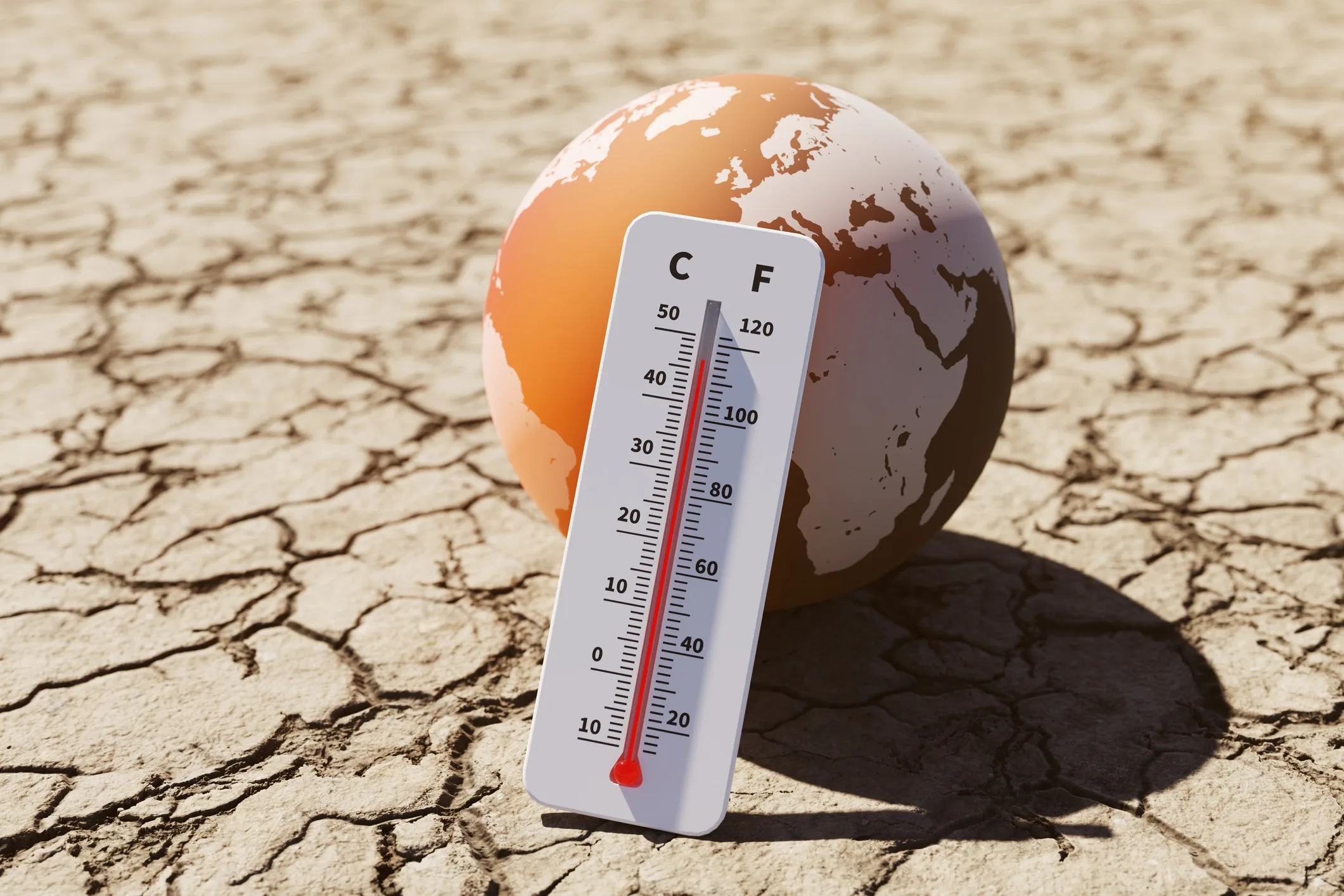Home>Weather and Climate>Ocean Temperature In New Jersey: A Comprehensive Guide


Weather and Climate
Ocean Temperature In New Jersey: A Comprehensive Guide
Published: March 4, 2024
Discover the latest ocean temperature trends in New Jersey and gain insights into the weather and climate patterns in the region. Explore a comprehensive guide to understanding the impact of weather and climate on ocean temperatures.
(Many of the links in this article redirect to a specific reviewed product. Your purchase of these products through affiliate links helps to generate commission for Temperatures.com, at no extra cost. Learn more)
Table of Contents
Introduction
The ocean's temperature plays a pivotal role in shaping the Earth's climate and influencing weather patterns. It serves as a vital indicator of the planet's overall health and stability. Understanding the dynamics of ocean temperature is crucial for various reasons, including its impact on marine life, weather systems, and global climate. In this comprehensive guide, we will delve into the factors affecting ocean temperature, the seasonal variations it undergoes, its influence on marine ecosystems, the correlation between human activities and ocean temperature, as well as the ongoing monitoring and research efforts in this field.
The ocean's temperature is not uniform across the globe, and it varies significantly based on geographical location, depth, and proximity to landmasses. This variation is influenced by a multitude of factors, including solar radiation, ocean currents, wind patterns, and the composition of the Earth's surface. These elements interact in complex ways, resulting in diverse oceanic temperature profiles that are essential to comprehend for a holistic understanding of the Earth's climate system.
As we embark on this exploration of ocean temperature, it is important to recognize the interconnectedness of various natural phenomena. The ocean's temperature is intricately linked to atmospheric conditions, such as air temperature, humidity, and precipitation. These interdependencies create a delicate balance that sustains life on Earth and shapes the environment in which we live.
By gaining insights into the intricacies of ocean temperature, we can appreciate the profound impact it has on marine ecosystems, weather patterns, and the overall climate. This knowledge empowers us to make informed decisions regarding conservation efforts, sustainable resource management, and the mitigation of human activities that contribute to changes in ocean temperature.
In the subsequent sections of this guide, we will delve deeper into the factors that influence ocean temperature, the seasonal variations it undergoes, its influence on marine life, the correlation between human activities and ocean temperature, as well as the ongoing monitoring and research efforts aimed at enhancing our understanding of this critical aspect of the Earth's natural systems. Let's embark on this enlightening journey to unravel the mysteries of ocean temperature and its profound significance for our planet.
Factors Affecting Ocean Temperature
The temperature of the ocean is influenced by a myriad of factors that interact in complex ways to shape its thermal profile. Understanding these factors is crucial for comprehending the dynamic nature of ocean temperature and its far-reaching implications. Let's delve into the key elements that contribute to the variation in ocean temperature:
-
Solar Radiation: The amount of solar energy absorbed by the ocean's surface plays a fundamental role in determining its temperature. Regions closer to the equator receive more direct sunlight, leading to higher water temperatures, while polar regions receive less solar radiation, resulting in colder waters.
-
Ocean Currents: The movement of ocean currents redistributes heat around the globe, profoundly impacting regional temperature patterns. Warm ocean currents, such as the Gulf Stream, transport heat from the tropics to higher latitudes, influencing the temperature of coastal areas they pass through.
-
Wind Patterns: Wind exerts a significant influence on ocean temperature through processes such as evaporation and mixing. Strong winds can enhance the evaporation of surface water, leading to cooling, while also promoting upwelling of colder, nutrient-rich water from deeper layers.
-
Depth and Topography: The depth of the ocean and its underlying topography contribute to temperature variations. Deeper waters tend to be colder, and the presence of underwater ridges and seamounts can influence the flow of currents, impacting temperature distribution.
-
Seasonal Changes: The tilt of the Earth's axis and its orbit around the sun result in seasonal variations in solar radiation, affecting ocean temperature. This is particularly evident in temperate and polar regions, where the ocean experiences distinct temperature fluctuations throughout the year.
-
Ice Formation and Melting: In polar regions, the formation and melting of sea ice have a profound impact on ocean temperature. The presence of ice reflects sunlight, reducing heat absorption, while its melting releases cold freshwater, influencing local temperature and salinity.
-
Human Activities: Human interventions, such as coastal development, pollution, and overfishing, can also affect ocean temperature. Urbanization along coastlines can lead to increased water runoff and higher temperatures, while pollution and overfishing can disrupt marine ecosystems, impacting temperature regulation.
By comprehensively understanding these factors, we gain valuable insights into the intricate mechanisms that govern ocean temperature. This knowledge forms the foundation for addressing challenges related to climate change, marine conservation, and sustainable resource management, underscoring the critical importance of studying the factors that shape ocean temperature.
Seasonal Variations in Ocean Temperature
Seasonal variations exert a profound influence on the temperature of the ocean, contributing to dynamic thermal patterns that impact marine ecosystems and weather systems. These fluctuations are driven by the Earth's axial tilt and its orbit around the sun, resulting in distinct changes in solar radiation and atmospheric conditions throughout the year.
In temperate and polar regions, the ocean undergoes noticeable temperature shifts as the seasons change. During the summer months, increased solar radiation leads to higher water temperatures, fostering the proliferation of marine life and influencing weather patterns. Conversely, in winter, reduced solar input causes ocean temperatures to decrease, affecting the distribution and behavior of marine species and contributing to the formation of weather systems.
The impact of seasonal variations on ocean temperature extends beyond surface waters, permeating into deeper layers through processes such as vertical mixing and thermohaline circulation. These mechanisms play a crucial role in redistributing heat and nutrients, shaping the ecological dynamics of the ocean and influencing global climate patterns.
In tropical regions, where the variation in solar radiation is less pronounced, seasonal changes in ocean temperature are more subtle but still significant. The interplay between solar input, evaporation, and precipitation influences the thermal structure of tropical waters, impacting the behavior of marine organisms and contributing to the formation of tropical weather phenomena such as monsoons and cyclones.
Furthermore, the seasonal melting and formation of sea ice in polar regions have a profound impact on ocean temperature. The retreat of sea ice during summer allows for increased solar absorption, leading to localized warming, while the expansion of ice during winter contributes to the cooling of surrounding waters. These fluctuations in sea ice coverage not only influence ocean temperature but also have far-reaching implications for the stability of polar ecosystems and the global climate system.
By comprehensively understanding the seasonal variations in ocean temperature, scientists and researchers can gain valuable insights into the intricate interplay between solar radiation, atmospheric dynamics, and oceanic thermal patterns. This knowledge is instrumental in predicting and mitigating the impacts of climate change, preserving marine biodiversity, and fostering sustainable management of ocean resources.
The seasonal ebb and flow of ocean temperature serve as a poignant reminder of the interconnectedness of natural systems and the delicate balance that sustains life on Earth. Embracing the nuances of seasonal variations in ocean temperature empowers us to appreciate the resilience and adaptability of marine ecosystems while reinforcing the imperative of safeguarding the oceans for future generations.
Impact of Ocean Temperature on Marine Life
The temperature of the ocean exerts a profound influence on the distribution, behavior, and overall well-being of marine life. From microscopic phytoplankton to majestic marine mammals, the thermal conditions of the ocean play a pivotal role in shaping the ecological dynamics of aquatic ecosystems. Understanding the impact of ocean temperature on marine life is crucial for comprehending the intricate interplay between environmental factors and the resilience of oceanic biodiversity.
Temperature serves as a critical determinant of the geographical range of marine species. Many organisms exhibit specific thermal tolerances, beyond which their physiological functions are compromised. As ocean temperature fluctuates, it directly influences the habitat suitability for various species. Warmer waters can expand the range of thermally tolerant species while potentially encroaching upon the habitats of cold-water organisms. Conversely, colder temperatures can restrict the distribution of warm-water species, leading to shifts in community composition and ecological interactions.
The seasonal variations in ocean temperature also play a pivotal role in regulating the life cycles of marine organisms. Many species exhibit behavioral and reproductive patterns that are intricately linked to temperature cues. For instance, the migration of certain fish species for spawning is often synchronized with specific temperature thresholds, ensuring the survival of their offspring in optimal environmental conditions. Additionally, the availability of food sources and the timing of primary productivity in the ocean are intricately tied to temperature-driven processes, influencing the entire marine food web.
Furthermore, ocean temperature influences the metabolic rates and growth patterns of marine organisms. As temperature impacts biochemical processes within organisms, variations in thermal conditions can alter energy budgets, feeding behaviors, and growth rates. For example, warmer waters can accelerate the metabolic rates of some species, leading to increased energy demands and potential shifts in predator-prey dynamics. Conversely, colder temperatures can slow down metabolic processes, affecting the overall productivity and energy transfer within marine ecosystems.
The impact of ocean temperature on marine life extends beyond individual species to encompass entire ecosystems. Coral reefs, for instance, are highly sensitive to thermal stress, with elevated temperatures leading to coral bleaching and the subsequent degradation of reef habitats. Similarly, the distribution and abundance of planktonic organisms, which form the foundation of marine food webs, are intricately linked to ocean temperature, influencing the entire trophic structure of aquatic ecosystems.
By comprehensively understanding the impact of ocean temperature on marine life, scientists and conservationists can gain valuable insights into the vulnerabilities and adaptive capacities of marine organisms in the face of climate change. This knowledge is instrumental in formulating conservation strategies, mitigating the impacts of warming oceans on vulnerable species, and fostering the resilience of marine ecosystems in a rapidly changing environment.
The intricate relationship between ocean temperature and marine life underscores the imperative of safeguarding the thermal integrity of the oceans, preserving biodiversity, and promoting sustainable management of marine resources. Embracing the complexities of this relationship empowers us to appreciate the interconnectedness of all life forms within the ocean and reinforces the urgency of collective action to protect these vital ecosystems.
Human Activities and Ocean Temperature
Human activities exert a significant influence on the temperature dynamics of the ocean, contributing to alterations in thermal profiles and posing challenges to marine ecosystems. The impact of human interventions on ocean temperature is multifaceted, encompassing diverse practices and developments that directly and indirectly influence the thermal integrity of the marine environment.
Coastal development, characterized by the construction of infrastructure, urban expansion, and industrial facilities along coastlines, can lead to increased water runoff and higher temperatures in adjacent marine areas. The alteration of natural landscapes and the proliferation of impervious surfaces contribute to elevated water temperatures, disrupting the thermal balance of coastal waters and impacting the habitats of marine species.
Furthermore, pollution from various sources, including industrial discharges, agricultural runoff, and untreated sewage, can introduce excess nutrients and contaminants into the ocean, leading to phenomena such as eutrophication and algal blooms. These processes can influence ocean temperature by affecting the balance of dissolved gases, altering light penetration, and impacting the thermal properties of the water column, thereby posing challenges to marine organisms and ecosystems.
Overfishing and destructive fishing practices also contribute to changes in ocean temperature by disrupting marine food webs and ecological dynamics. The depletion of key species can lead to shifts in the abundance and distribution of organisms, influencing energy transfer and trophic interactions within marine ecosystems. These alterations can have cascading effects on ocean temperature regulation and the thermal suitability of habitats for various species.
In addition, the release of greenhouse gases from human activities, particularly carbon dioxide from the burning of fossil fuels, contributes to the phenomenon of ocean acidification. This process, driven by the absorption of carbon dioxide by seawater, can influence ocean temperature by impacting the chemical composition of the water and altering the thermal properties of marine environments. Ocean acidification poses challenges to the physiological resilience of marine organisms and can exacerbate the impacts of warming temperatures on vulnerable species.
The cumulative effects of these human activities underscore the intricate relationship between anthropogenic interventions and ocean temperature dynamics. Recognizing the interconnectedness of human actions and the thermal integrity of the ocean is essential for formulating sustainable management strategies, promoting conservation efforts, and mitigating the impacts of human-induced changes on marine ecosystems.
By comprehensively understanding the influence of human activities on ocean temperature, scientists, policymakers, and stakeholders can work towards implementing measures to minimize the adverse effects of human interventions, fostering the resilience of marine environments, and preserving the thermal stability of the oceans for future generations. Embracing the complexities of this relationship empowers us to recognize the imperative of collective responsibility in safeguarding the oceans and promoting sustainable coexistence with the natural world.
Monitoring and Research Efforts
Monitoring and researching ocean temperature dynamics are essential components of understanding the complex interplay between environmental factors, climate patterns, and marine ecosystems. Scientists and researchers employ a diverse array of methodologies and technologies to comprehensively monitor and analyze ocean temperature, shedding light on critical trends and patterns that inform our understanding of the Earth's natural systems.
Satellite-based remote sensing technologies play a pivotal role in monitoring ocean temperature on a global scale. Advanced satellite instruments, such as sea surface temperature radiometers, provide high-resolution data that enable the mapping of surface temperature variations across vast expanses of the ocean. These observations contribute to the identification of temperature anomalies, the tracking of oceanic heat distribution, and the detection of phenomena such as El Niño and La Niña, which have far-reaching impacts on weather patterns and marine ecosystems.
In addition to satellite-based monitoring, in-situ measurements are conducted using a variety of instruments, including autonomous floats, buoys, and research vessels equipped with advanced sensors. These platforms enable the collection of detailed temperature profiles at different depths, facilitating the characterization of vertical temperature gradients and the study of thermal stratification in the ocean. These in-situ measurements are instrumental in validating satellite data and enhancing our understanding of temperature dynamics in specific regions and ocean layers.
Furthermore, research efforts encompass the utilization of numerical models and simulations to elucidate the complex interactions driving ocean temperature variations. Ocean circulation models, coupled with atmospheric models, enable scientists to simulate the intricate processes governing heat exchange, ocean currents, and thermal anomalies. These simulations provide valuable insights into the mechanisms shaping ocean temperature patterns, aiding in the prediction of future trends and the assessment of the impacts of climate change on oceanic thermal dynamics.
Collaborative research initiatives, such as the Argo program, which deploys a global array of profiling floats to monitor temperature and salinity in the upper ocean, have significantly advanced our capacity to comprehensively monitor and understand ocean temperature dynamics. These initiatives foster international cooperation and data sharing, contributing to a holistic understanding of global oceanic thermal trends and their implications for marine ecosystems and climate systems.
The integration of advanced monitoring technologies, in-situ measurements, numerical modeling, and collaborative research endeavors forms the cornerstone of ongoing efforts to enhance our understanding of ocean temperature dynamics. These multifaceted approaches empower scientists to unravel the complexities of thermal patterns in the ocean, providing valuable insights that underpin informed decision-making, conservation strategies, and sustainable management of marine resources.
By continually advancing monitoring and research efforts, the scientific community strives to deepen our comprehension of ocean temperature dynamics, fostering resilience in the face of climate change and contributing to the preservation of the oceans as vital components of the Earth's interconnected systems.
Conclusion
In conclusion, the temperature of the ocean stands as a cornerstone of the Earth's climate system, exerting a profound influence on marine life, weather patterns, and global climate dynamics. The comprehensive exploration of ocean temperature dynamics has revealed the intricate interplay of natural phenomena, human activities, and scientific endeavors in shaping the thermal integrity of the marine environment.
From the factors influencing ocean temperature, including solar radiation, ocean currents, wind patterns, and seasonal variations, to the profound impact of temperature fluctuations on marine ecosystems, the interconnectedness of these elements underscores the critical importance of understanding and monitoring ocean temperature dynamics. The seasonal ebb and flow of ocean temperature, driven by the Earth's axial tilt and its orbit around the sun, permeates into deeper layers, influencing the behavior of marine species and contributing to the formation of weather systems.
Moreover, the influence of human activities on ocean temperature, encompassing coastal development, pollution, overfishing, and the release of greenhouse gases, underscores the imperative of collective responsibility in safeguarding the oceans and promoting sustainable coexistence with the natural world. The cumulative effects of these interventions highlight the need for sustainable management strategies and conservation efforts to mitigate the adverse impacts on marine ecosystems and preserve the thermal stability of the oceans.
The ongoing monitoring and research efforts, facilitated by advanced technologies and collaborative initiatives, have significantly advanced our capacity to comprehensively monitor and understand ocean temperature dynamics. Satellite-based remote sensing, in-situ measurements, numerical modeling, and collaborative research endeavors have collectively contributed to a holistic understanding of global oceanic thermal trends, empowering scientists to unravel the complexities of thermal patterns in the ocean and inform informed decision-making, conservation strategies, and sustainable management of marine resources.
Embracing the complexities of ocean temperature dynamics empowers us to appreciate the interconnectedness of natural systems and reinforces the urgency of collective action to protect these vital ecosystems. By continually advancing monitoring and research efforts, the scientific community strives to deepen our comprehension of ocean temperature dynamics, fostering resilience in the face of climate change and contributing to the preservation of the oceans as vital components of the Earth's interconnected systems.














